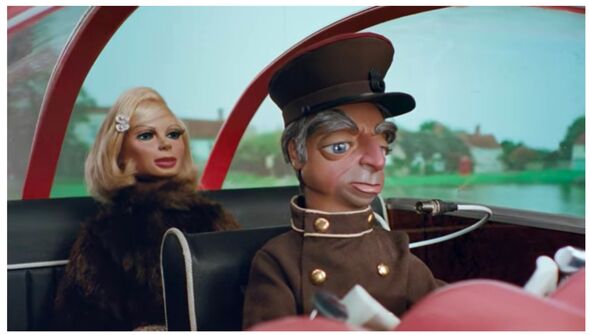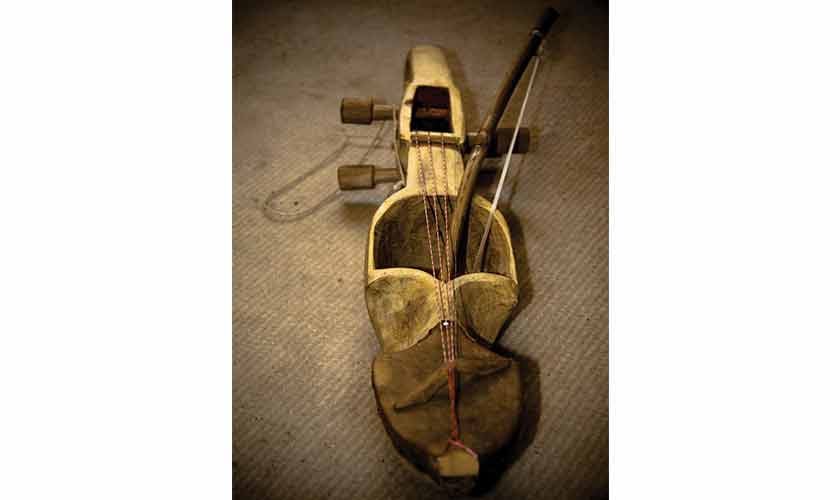It has to be one of the most thrilling opening credits sequences to a television programme ever. A countdown of 5-4-3-2-1! Thunderbirds are Go! As we see the five Thunderbird craft and the launch of the sleek, rocket-like Thunderbird 1. Then comes the rousing Thunderbirds theme, composed by Barry Gray, which is played as the members of International Rescue are introduced. You simply had to carry on watching after an intro like that, didn’t you?
Millions did just that.
It’s exactly sixty years ago this month — on September 30, 1965 — that *Thunderbirds* made its first dramatic appearance on our television screens, with the episode *Trapped in the Sky*, shown at 7pm. The series proved a big hit with viewers at the time, and its popularity shows absolutely no sign of waning.
The original 32 episodes, shown in more than sixty countries worldwide, have begun another re-run on Saturday mornings on the Freeview nostalgia channel Talking Pictures TV. *Thunderbirds* has also spawned two film sequels, a live-action film adaptation, and two television remakes, the most recent in 2015.
And tomorrow, to mark its anniversary, two classic, fully-restored 4K Ultra High Definition episodes are being screened in a double-bill in cinemas across Britain.
To coincide with the screenings, a special exhibition at the Museum of Brands in London is showcasing the ground-breaking merchandise of *Thunderbirds* and another classic Gerry Anderson series, *Space: 1999*, with toys, games, comics, and books among the memorabilia on show.
—
So, the first question I ask when I meet Jamie Anderson, the proud son of the programme’s visionary creator Gerry Anderson, is why he believes the *Thunderbirds* phenomenon has endured so long.
“There’s a couple of reasons,” he replies.
“One is down to the show itself — the combination of the people that made it, and the themes. Family, selflessness, technology, and aspiration — all of those are timeless and remain things we care about and can connect with today.
Then, when you combine that with the people who worked on it — from Dad, Derrick Meddings, John Read, Reg Hill, Bob Bell, Barry Gray — all the artists and creators, they all were excited by the future.
It was a wartime generation who’d lived through horrible things, division, and conflict, and they wanted to see a brighter future. They saw a way to do that through science fiction, which is the only inherently optimistic form of storytelling.”
*Thunderbirds* certainly embodied the optimistic spirit of the 1960s. Britain was on the crest of a wave in 1965 — The Beatles and the Rolling Stones had conquered America, Alf Ramsey’s England football team was just months away from winning the World Cup (held on home soil for the first time), and Prime Minister Harold Wilson, who was re-elected with a landslide victory in March 1966, had spoken enthusiastically about the “great white heat of technology.”
Meanwhile, the race to the Moon, between the US and the Soviet Union, was exciting people across the globe. It was a time when everything seemed possible, and *Thunderbirds*, which was set in the year 2065, tapped into this positivity about the future.
—
You could say the series was the crowning glory of Gerry Anderson — a true genius of British television who overcame an unhappy childhood and family tragedy (his beloved older brother Lionel was killed in action as a RAF pilot in World War Two) to make brilliantly innovative programmes that brought joy to children and adults alike.
Born in London in 1929, Anderson’s first job in the world of entertainment was as a plasterer on film sets. He later worked in editing and in the mid-1950s set up AP Films with his friend Arthur Provis.
They pioneered Supermarionation, a puppetry process which combined the traditional use of strings with electronics to synchronise the puppets’ lip movements with pre-recorded dialogue. They also pioneered the use of colour, with *Stingray*, which premiered in 1964, becoming the first British dramatic television series to be shot entirely in colour, and *Thunderbirds* the second.
The inspiration for *Thunderbirds* came from a real-life disaster which resulted in a miraculous rescue. In October 1963, 59 miners were trapped underground in a flooded mine in Lower Saxony, West Germany. After two weeks and three complex rescues, they were finally saved — the so-called “Miracle of Lengede.” This gave Anderson the idea for a puppet series about a family-run International Rescue operation.
It was easily the most ambitious series of its type ever made.
—
“Dad’s borderline embarrassment about what he was doing with puppets pushed him to take the art form further than it had been before,” explains Jamie. “You look at stuff that was done just a few years earlier on *Watch with Mother*, like *Bill and Ben* — they were good in their own way, but there was a night and day difference.”
Then there was the music.
“Barry Gray’s music is almost 50% of *Thunderbirds*,” says Jamie. “If you put it on a purely theoretical basis and said, ‘We’re going to make a kids’ puppet show and we’re going to have a sixty-piece orchestra and it’s going to be massive and bombastic and militaristic,’ people would say, ‘That sounds crazy, I don’t think it’ll work,’ but on screen it’s the perfect marriage of visuals and audio.”
Originally, each episode was planned to be twenty-five minutes long, but Lew Grade, the ITV supremo who commissioned the series, liked the pilot episode *Trapped in the Sky* so much that he requested that the length be extended to fifty minutes.
While spectacular explosions, thrilling, against-the-clock rescues, and great special effects using scaled models played a big part in *Thunderbirds*’ appeal, the series also possessed great charm with the human element very much to the fore.
The puppet characters soon became familiar television faces. Jeff Tracy, the American head of International Rescue, his five sons, and the technical genius Brains, who designed the Thunderbird rescue craft, were ably assisted by the glamorous, cigarette-holder-waving Lady Penelope and her ever-loyal Cockney butler/chauffeur Parker, who drove her Ladyship around in her fabulous six-wheeled pink Rolls Royce, registration number FAB 1.
These two quintessentially British characters provided the series with much of its humour to offset the deadly serious work of International Rescue.
—
The popularity of *Thunderbirds* was further enhanced by the wide range of merchandise connected with the show. This was new territory when it came to a television series.
“Without the merchandise, I don’t think it would have been as successful,” says Jamie. “But Keith Shackleton and his team expanded the whole *Thunderbirds* world out in a way that we’ve really only seen in the last ten or fifteen years with things like Marvel. They were finding a way for people to take some of the adventure home.
“So you could recreate the adventures with your Dinky Thunderbird 2 or find out more about your favourite *Thunderbirds* characters beyond what was on the television with the comic *TV Century 21*. You could even buy *Thunderbirds* records. All these things connected you with the show.”
All of us who can remember the thrill of finding a *Thunderbirds* rescue craft at the foot of our beds on Christmas morning will appreciate the point that Jamie is making.
The influence of *Thunderbirds* was far-reaching.
“There are people who watched those shows who were inspired to become film-makers themselves, to become artists, to become scientists. Some of the most highly ranked people at NASA and the European Space Agency, and those working on Artificial Intelligence, were inspired by watching shows like *Thunderbirds*,” says Jamie.
—
As proud as he is of his father’s trailblazing television work, on a personal level Jamie is even prouder of what he did to raise awareness of dementia in the early 2010s.
“The looming diagnosis of dementia spelled the end of Dad’s career and in many ways the end of his life, given how much he cared about his work. So, when he made the decision to come out about it and speak to the papers, it made a big impact at a time when dementia was still heavily stigmatised.
“As with *Thunderbirds*, he again turned something that was traumatic and terrible for him into something that was globally positive. At that time, there was a real shift in public attitudes and perception of dementia, and I think Dad’s efforts there were part of the catalyst for that. He was directly responsible for raising more than £1m for the Alzheimer’s Society.”
Gerry Anderson sadly passed away in late 2012 at the age of 83, but his most famous work lives on.
—
When I tell Jamie that I used to watch *Thunderbirds* repeats with my 97-year-old father and how we would do the 5-4-3-2-1! countdown together as we used to do fifty years earlier when I was a child, he is touched.
“The emotional memory of those shows means a huge amount to people. It’s an inter-generational thing. I’ve spoken to so many who have watched the show on the first run with their dad and maybe their grandfather at the same time — and it brought three generations together.
“Since then, those kids have grown up and they’ve now got kids and grandkids, and they introduced the show to them too. So, it has straddled five generations already. Again, for a kids’ puppet show, I don’t think there’s that many that have had that kind of accolade.”
You could say that with our societies — and indeed the world — looking so divided at present, we need *Thunderbirds* with its ethos of international co-operation more than ever.
Jamie Anderson concurs.
“The whole concept of a small group of people coming together to make a global difference is such a beautiful message, really. Rather than technology being used to make weapons of war, technology being used to make weapons of rescue.
“I wish we could have a bit more aspiration, a bit more *Thunderbirds*, and a bit more International Rescue in our lives.”
—
**Thunderbirds: Trapped in the Sky/Terror in NYC** is re-released at cinemas tomorrow.
**Thunderbirds & Space: 1999 — A Celebration of Toys and Collectables** exhibition runs at the Museum of Brands until February 28, 2025.
For more information, visit [museumofbrands.com](https://museumofbrands.com).
https://www.express.co.uk/news/uk/2110308/real-life-tragedy-behind-thunderbirds



